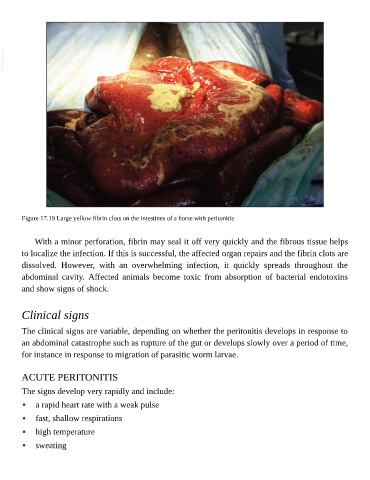Page 798 - The Veterinary Care of the Horse
P. 798
VetBooks.ir
Figure 17.19 Large yellow fibrin clots on the intestines of a horse with peritonitis
With a minor perforation, fibrin may seal it off very quickly and the fibrous tissue helps
to localize the infection. If this is successful, the affected organ repairs and the fibrin clots are
dissolved. However, with an overwhelming infection, it quickly spreads throughout the
abdominal cavity. Affected animals become toxic from absorption of bacterial endotoxins
and show signs of shock.
Clinical signs
The clinical signs are variable, depending on whether the peritonitis develops in response to
an abdominal catastrophe such as rupture of the gut or develops slowly over a period of time,
for instance in response to migration of parasitic worm larvae.
ACUTE PERITONITIS
The signs develop very rapidly and include:
• a rapid heart rate with a weak pulse
• fast, shallow respirations
• high temperature
• sweating

